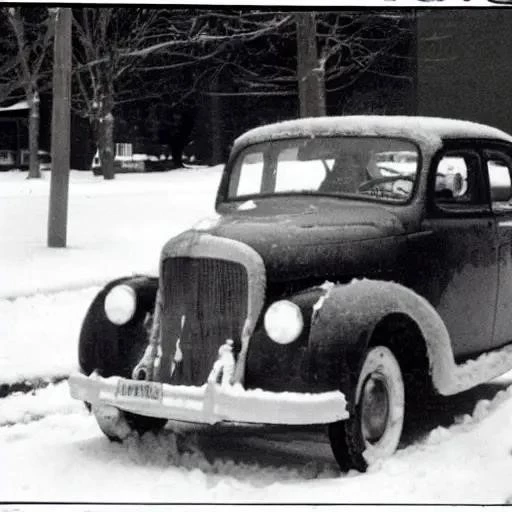Stop! Why Revving Your Engine to Warm Up Your Car Could Be Killing It (And What Savvy Drivers Do Instead)
For decades, a familiar ritual has played out in countless driveways and parking lots worldwide: as winter’s chill descends, drivers instinctively fire up their engines, letting them idle, often giving the accelerator a few hearty pumps, believing this action effectively prepares their vehicle for the journey ahead. This deeply ingrained habit, passed down through generations, feels like a responsible act of car care, a necessary kindness to the machinery before embarking on a cold morning commute; Yet, what if this seemingly innocuous practice, widely accepted and regularly performed, is not only unnecessary but actively detrimental to your car’s longevity and your wallet? The truth, surprisingly, is far more nuanced than most realize, challenging a fundamental assumption about automotive warm-up routines.
Modern automotive engineering has rendered this traditional warm-up method largely obsolete, even counterproductive. The very act of revving your engine to warm up your car, especially when the engine is cold, can inflict undue stress on critical components, accelerate wear, and even contribute to higher emissions and reduced fuel economy. It’s a revelation that might initially baffle many motorists, prompting a re-evaluation of long-held beliefs. By understanding the intricate mechanics at play within your vehicle’s heart and embracing contemporary best practices, you can dramatically extend your car’s life, enhance its performance, and contribute positively to environmental stewardship. Let’s delve into the compelling reasons why it’s time to rethink your morning routine and discover the smarter, more effective approach.
Understanding Modern Car Warm-Up: The Smarter Approach
While the myth of aggressive idling persists, contemporary automotive wisdom, backed by extensive research and manufacturer recommendations, points towards a dramatically different and undeniably superior strategy. The core principle is simple: your engine warms up most efficiently and safely when it’s under light load, meaning by gently driving it. This approach allows all components — from the engine block to the transmission and tires — to reach optimal operating temperatures synchronously, preventing localized stress and ensuring comprehensive lubrication.
Automotive engineers universally concur that an engine’s life is prolonged not by static idling, which can actually strip crucial oil from cylinder walls due to excess fuel, but by gradual, operational warming; Dr. Anya Sharma, a leading powertrain specialist at a prominent global auto manufacturer, explains, “Modern engines are designed with incredibly tight tolerances and sophisticated fuel injection systems. They don’t need extensive idling to ‘get ready.’ In fact, prolonged idling, especially when cold, can lead to fuel washing down the cylinder walls, diluting the oil and accelerating wear on rings and bearings. The catalytic converter also takes longer to reach its effective operating temperature, meaning more harmful emissions are released into the atmosphere initially.” This expert perspective underscores the critical shift in understanding required from today’s drivers.
So, what’s the optimal strategy? After starting your car, allow it a brief moment — typically 30 to 60 seconds — for the oil to circulate properly throughout the engine. During this short interval, you can buckle up, adjust mirrors, or set your navigation. Following this brief pause, gently begin driving. Avoid aggressive acceleration or high RPMs for the first few miles. This measured approach allows the engine, transmission, and other drivetrain components to gradually warm up together, expanding evenly and ensuring all fluids reach their intended viscosity. It’s a remarkably effective method that safeguards your vehicle’s integrity while also delivering tangible benefits in fuel efficiency and reduced environmental impact;
The Hidden Costs of Old Habits
The persistent belief in aggressive idling carries several hidden costs. Firstly, it wastes fuel. A stationary car, running its engine, consumes gasoline without moving an inch, directly impacting your wallet. Secondly, it contributes unnecessarily to air pollution. Cold engines run a richer fuel mixture, meaning more unburnt hydrocarbons and carbon monoxide are expelled before the catalytic converter reaches its optimal temperature to neutralize these harmful gases. Finally, and perhaps most importantly for car owners, it accelerates engine wear. When an engine is cold, its oil is thicker, taking longer to circulate effectively and lubricate all moving parts. Revving it puts immediate, intense pressure on these poorly lubricated components, potentially leading to premature wear and costly repairs down the line. By understanding these subtle yet significant consequences, drivers are empowered to make choices that benefit both their vehicles and the planet.
Embracing a Future of Smarter Car Care
The shift from traditional engine warm-up rituals to modern, informed practices represents a compelling step forward in automotive care. It’s a testament to how evolving technology and deeper scientific understanding continually reshape our relationship with our vehicles. By integrating insights from AI-driven diagnostics and materials science, manufacturers have engineered engines that are more robust, efficient, and less demanding than their predecessors. Embracing the gentle-drive warm-up isn’t just about following new rules; it’s about adopting a proactive, intelligent approach to car ownership that yields remarkable dividends.
This forward-looking perspective encourages us all to challenge outdated notions and embrace the benefits of modern engineering. Imagine extending your car’s life by years, saving hundreds on fuel and potential repairs, all while contributing to cleaner air for everyone. The choice is clear: move beyond the myth of aggressive idling and step into an era of smarter, more sustainable driving. Your car, your wallet, and the environment will undoubtedly thank you for it. The future of car care is not about more effort, but about smarter, more informed choices, driving us towards a more efficient and environmentally conscious tomorrow.






